Our travel adventures are sometimes local days, and Galveston is frequently our chosen destination because there are so many surprises in Galveston. The good news is that it could take us years to know all there is to know about Galveston and its sometimes tumultuous history.
I have written about just a few examples of unexpected and surprising art available in Galveston to see in an afternoon or even over a few days. It is free, historical, entertaining fun for the entire family or just for you by yourself.
You can discover, as we have, that art in every form is everywhere in Galveston, in shops, galleries, museums, on the seawall, on buildings, corners, and front yards of peoples’ homes. Click here for more information about where to stop on your way to Galveston.
The Broadway Cemetery Historic District
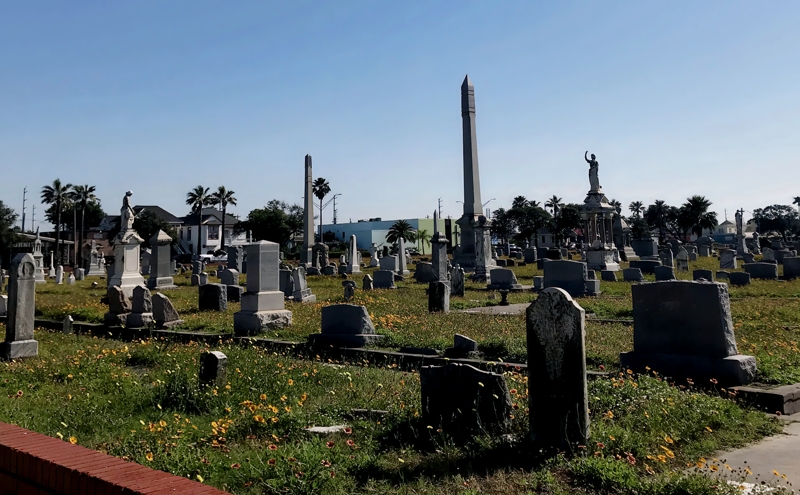
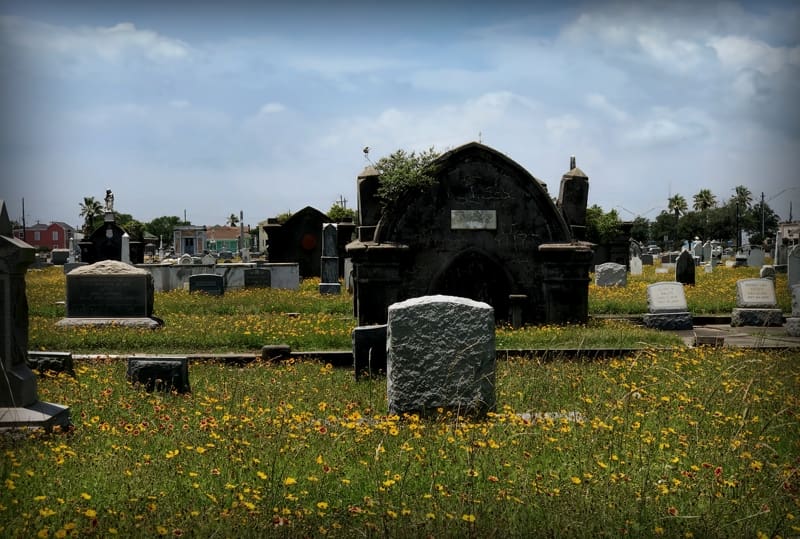
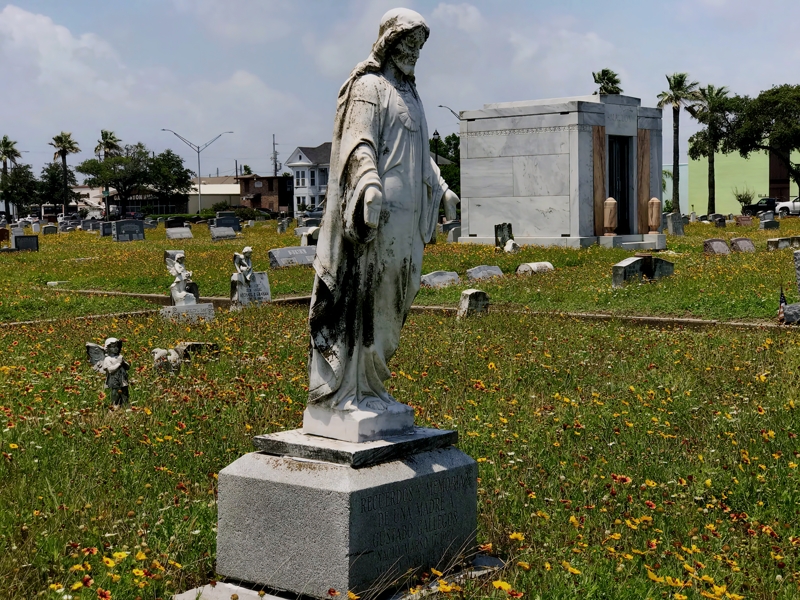
You can’t miss seeing this large cemetery as you drive into Galveston at Broadway and 43rd Street. I have read there are over 12,000 people buried in this cemetery in three layers. Is this 200-year-old cemetery haunted, as local ghost tours suggest? Perhaps.
Not only is this the final resting place of some of Galveston’s prominent citizens, but the burial site for victims of the 1900 Galveston Hurricane and war veterans from as far back as the Civil War. Regardless, this historic cemetery, beautiful in spring when brown-eyed Susans are in bloom, is a peaceful way to spend an hour or so when you visit Galveston. What a story this cemetery has to tell.
Rosenberg Fountains
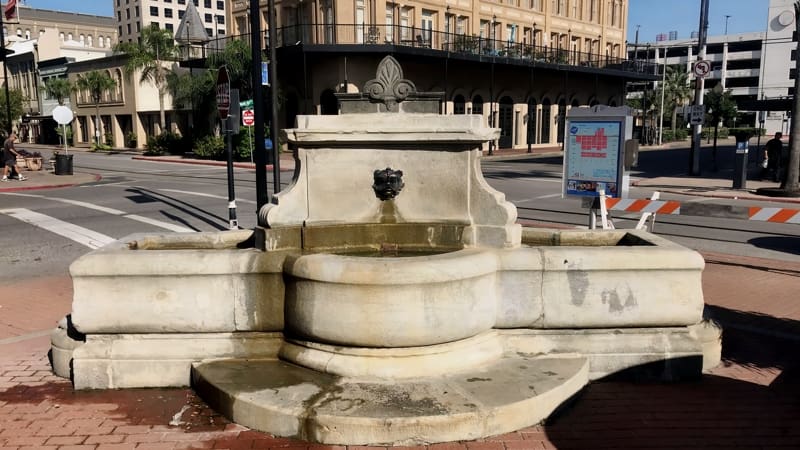
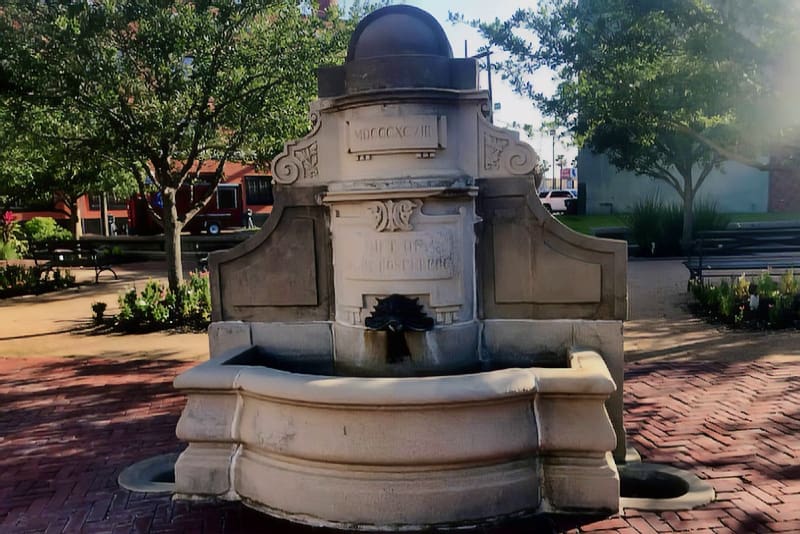
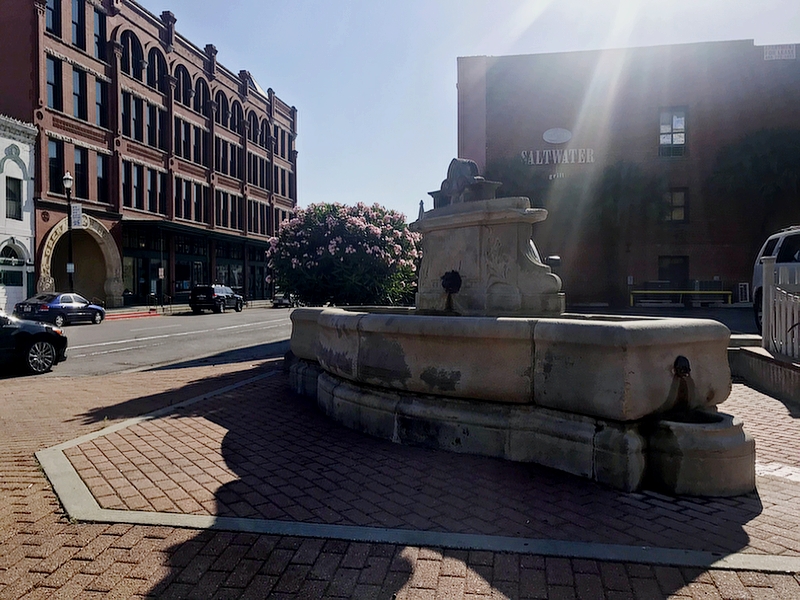
Businessman and philanthropist Henry Rosenberg bequeathed $30,000 to the City of Galveston to create fountains throughout the City, and sculptor John Massey Rhind created several unique granite fountains spaced throughout Galveston. Each fountain had a water source for people and another for horses and dogs. Mr. Rhind completed the first group of fountains in 1898.
As time went by, the fountains became victims of the dreaded gulf coast hurricanes and the changing times. Transportation by automobile took away the need for horse water fountains, and new building construction necessitated the destruction of some fountains.
Only nine Rosenberg fountains remain in Galveston today. An inscription on each reads “Gift of Henry Rosenberg.” I enjoyed learning about this little historical nugget.
The Kindness Project Mural
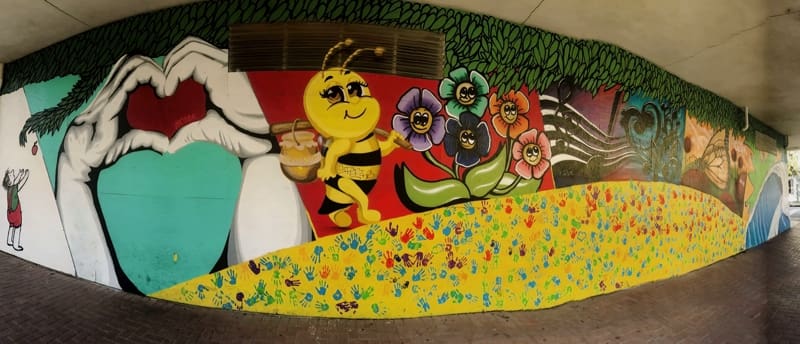
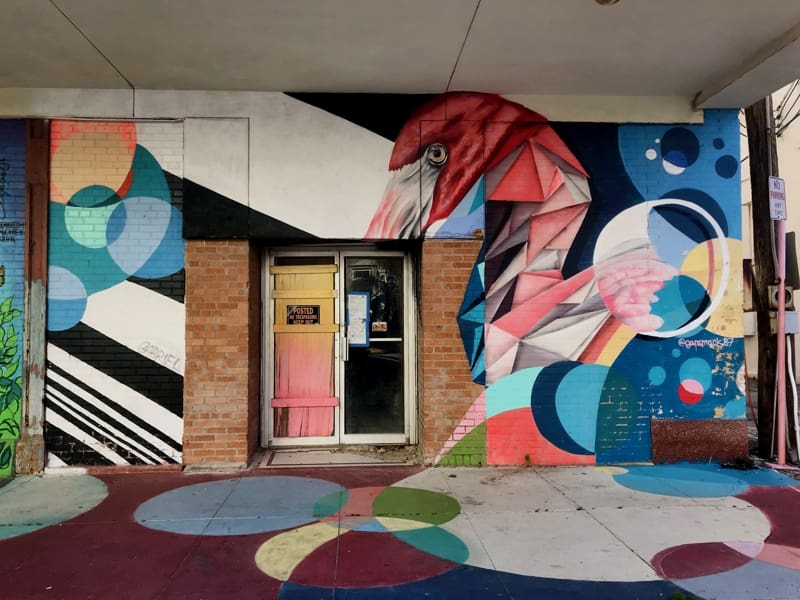


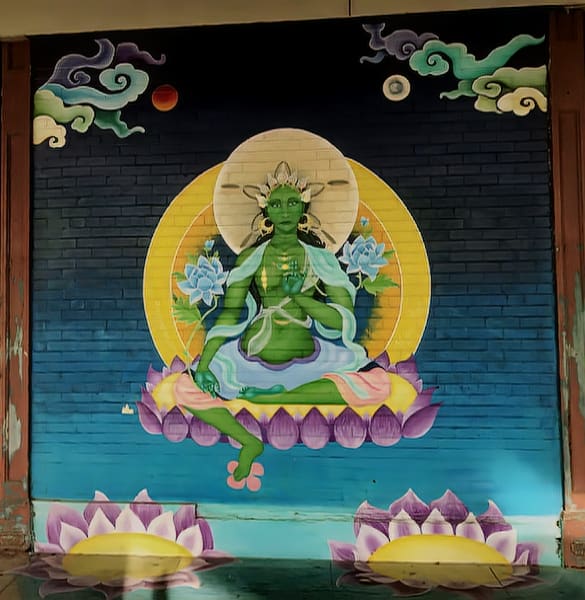
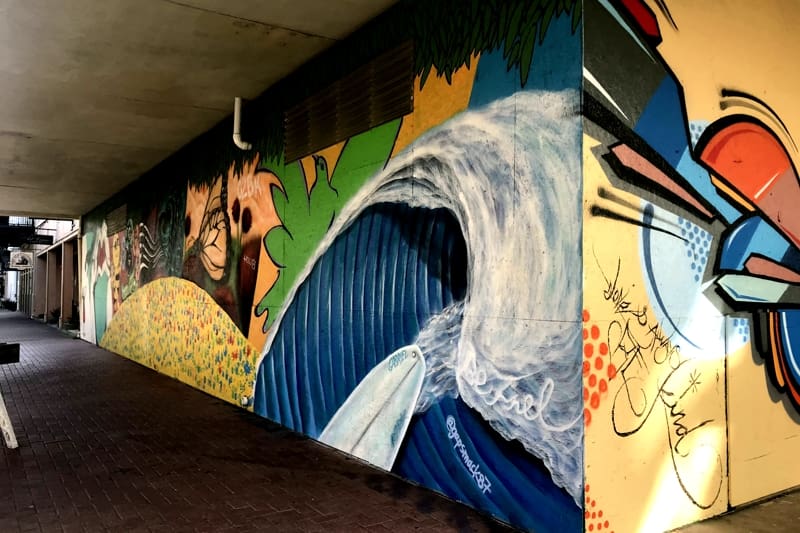
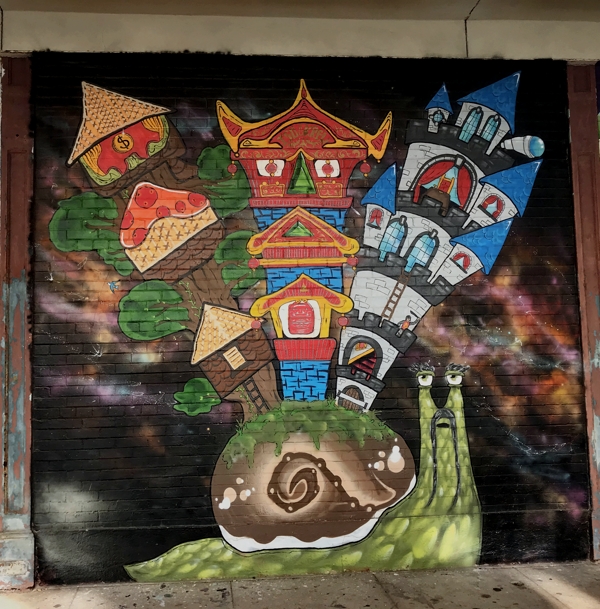

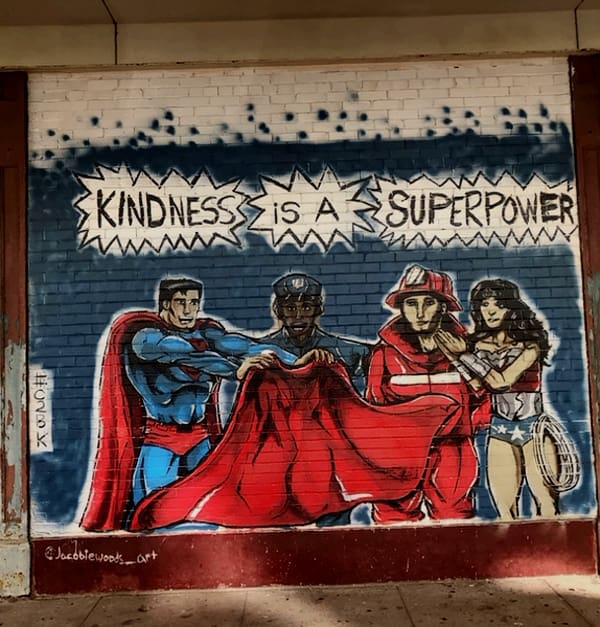
Almost the entire walls on two sides of the old McCrory building, located at the corner of Postoffice and 22nd Streets, are covered with wonderful mural art. The organization responsible for this mural, inspired by The Giving Tree by Shel Silverstein, promotes a mission to spread kindness by action and not merely words.
The Kindness Project Mural is only one example of the colorful street art to be seen throughout Galveston. Just be on the watch; you’ll see it everywhere.
Turtles About Town
Turtles About Town is a community art project showcasing the City of Galveston and the conservation efforts of Turtle Island Restoration Network to protect endangered sea turtles on the upper Texas coast.
Turtles About Town

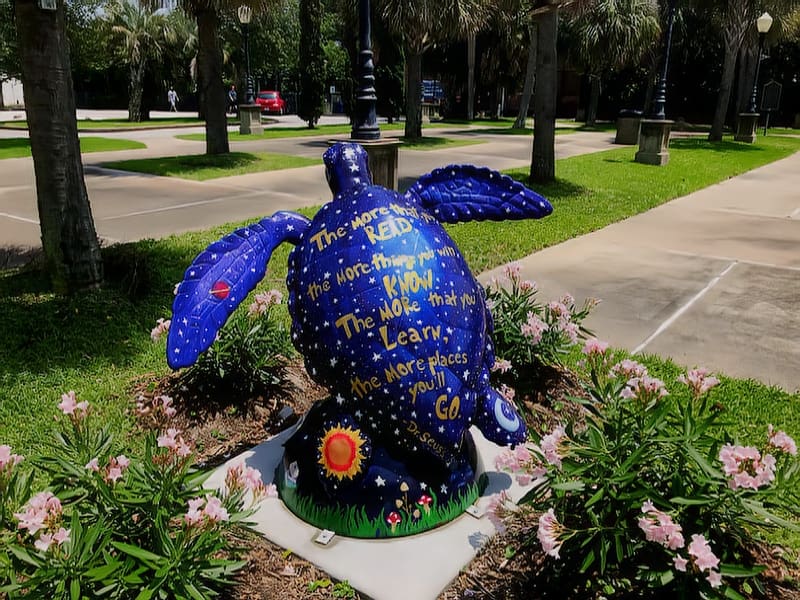

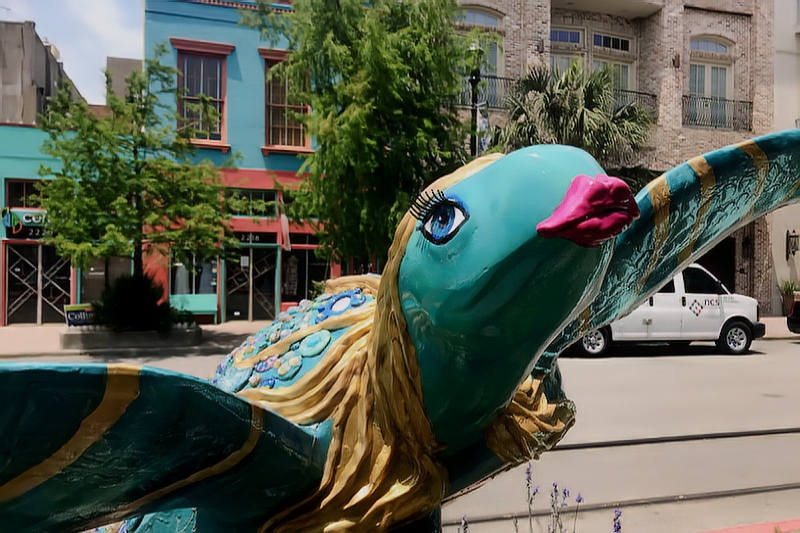
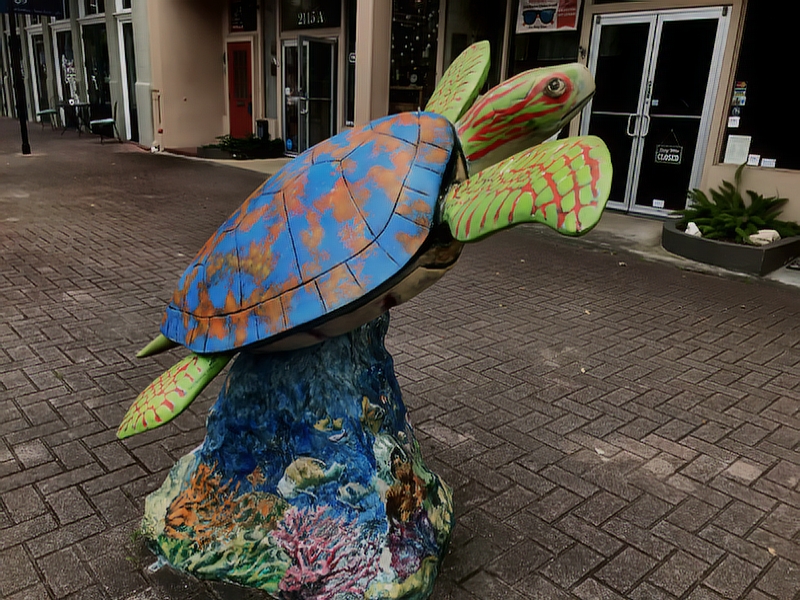
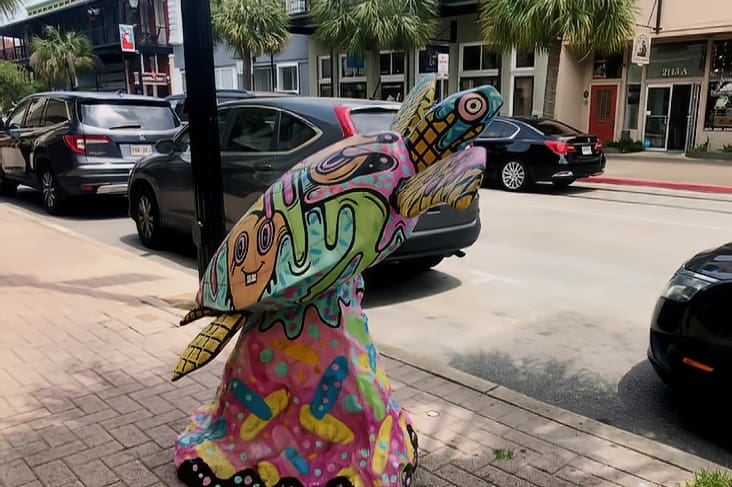
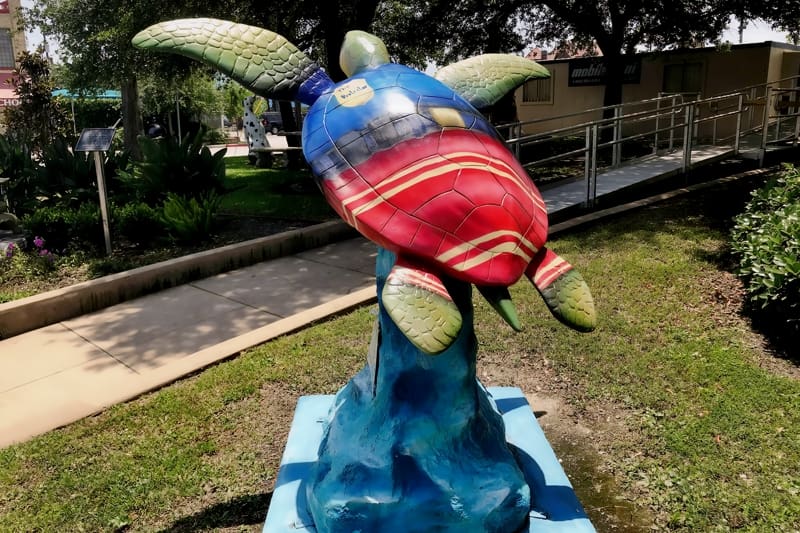

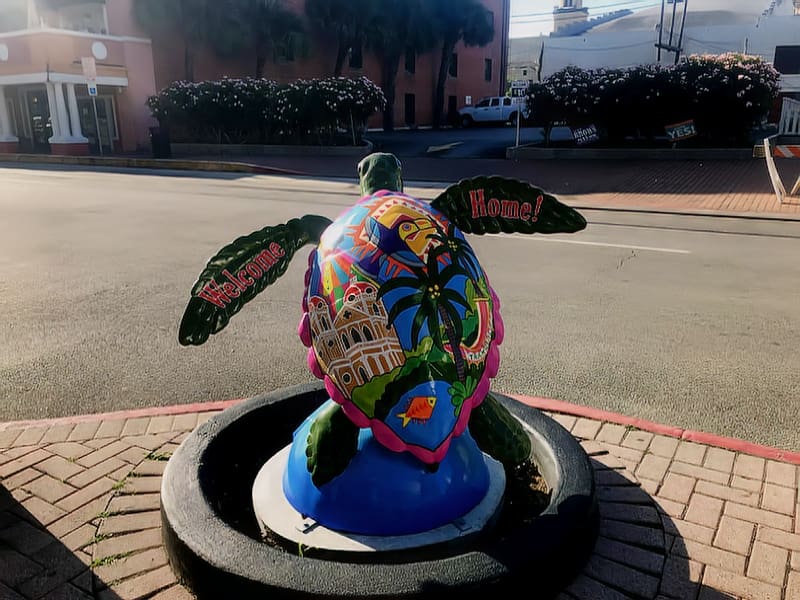
I have lived in Galveston’s backyard for 25 years but never knew about this project and had never seen any of these extremely visible and easy-to-spot turtles. This project is undoubtedly a great tourist attraction in Galveston, but its most crucial purpose is to engage the public in conserving endangered sea turtles.
Turtle Island Restoration has been in operation for over thirty years as an advocate for marine life. It has done great work in its conservation and education efforts on behalf of our ocean life.
Turtle Island Restoration partnered with Clay Cup Studios to introduce these statues throughout Galveston. Individuals or organizations in Galveston sponsor individual turtle sculptures and their sponsored turtle is then created by local artists and placed in a high traffic location.
I don’t believe there are any in place now, but I think a geocache near one of these turtles is a great idea. You can get more information about the location of these turtles at Turtles About Town.
Tree Sculptures
Steve and I will never forget September 13, 2008, the date Hurricane Ike devastated not only our home and community but also Galveston and the surrounding area. We evacuated to San Antonio and could not return “home” for over a week and lived in our travel trailer for over a year while our home was being put back together.
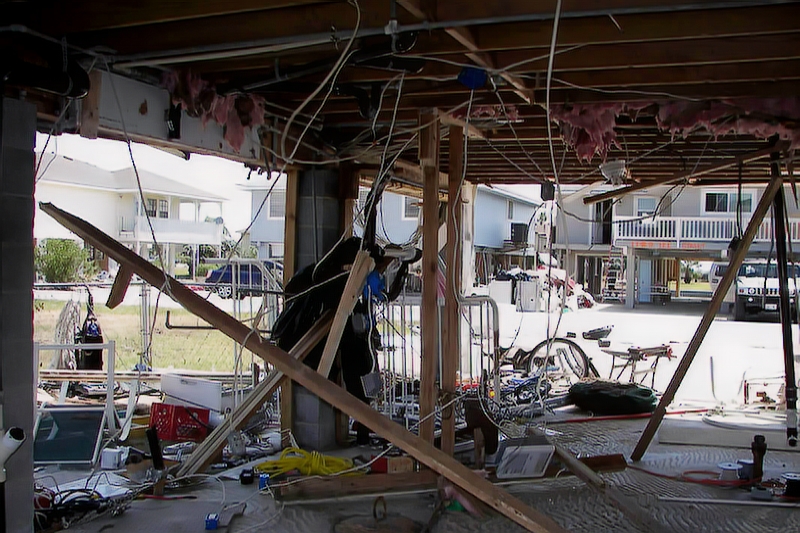
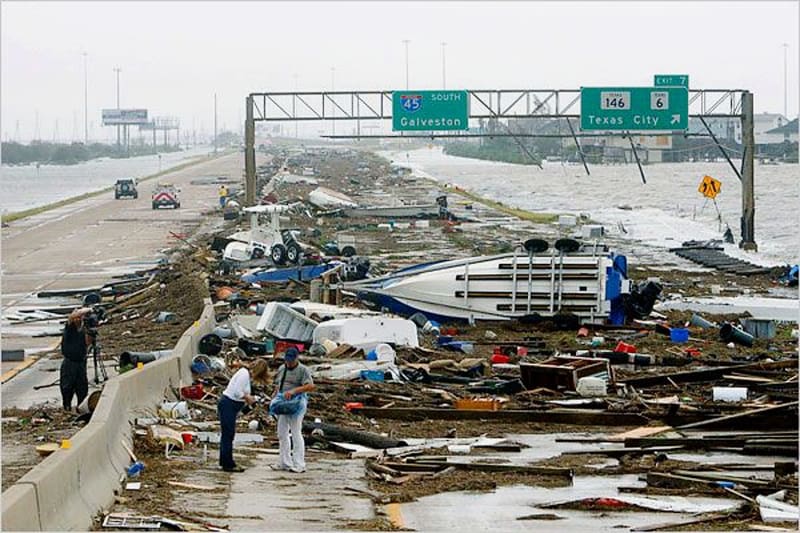

These old photos show our home destruction, the freeway in front of our neighborhood and a few miles from the Galveston Causeway, and finally, downtown Galveston.
It was a long and painful recovery and restoration process, but looking back at that time from today in 2020, we were very fortunate. It wasn’t a pandemic, was it? Along with our friends, neighbors, and nearby communities, we spent the next year rebuilding, restoring, fixing, replacing, removing – a whole lot of redos.
What has this got to do with tree sculptures?
Over 40,000 trees, ancient, old, and majestic, were uprooted or severely damaged by the devastating winds and tidal surge of Hurricane Ike. Donna Leibbert, a Galveston citizen, initiated this marvelous tree sculpture project inspired by tree sculptures in Biloxi, Mississippi, in the aftermath of Hurricane Katrina.

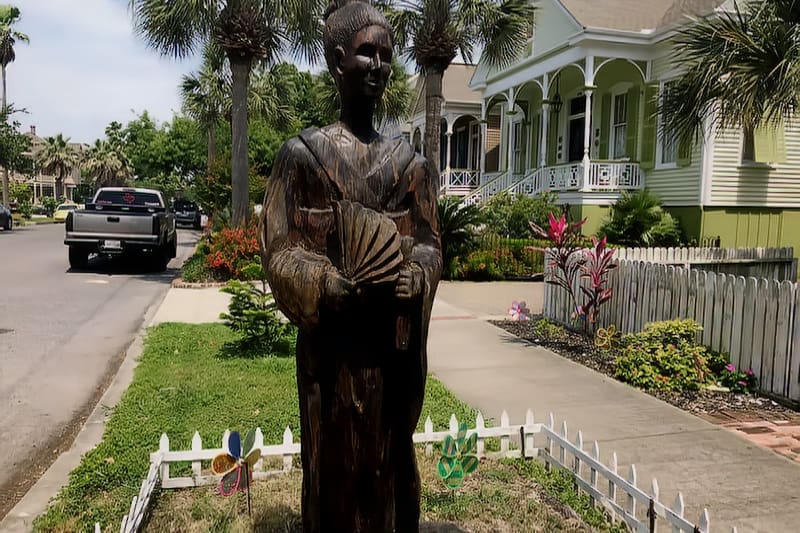
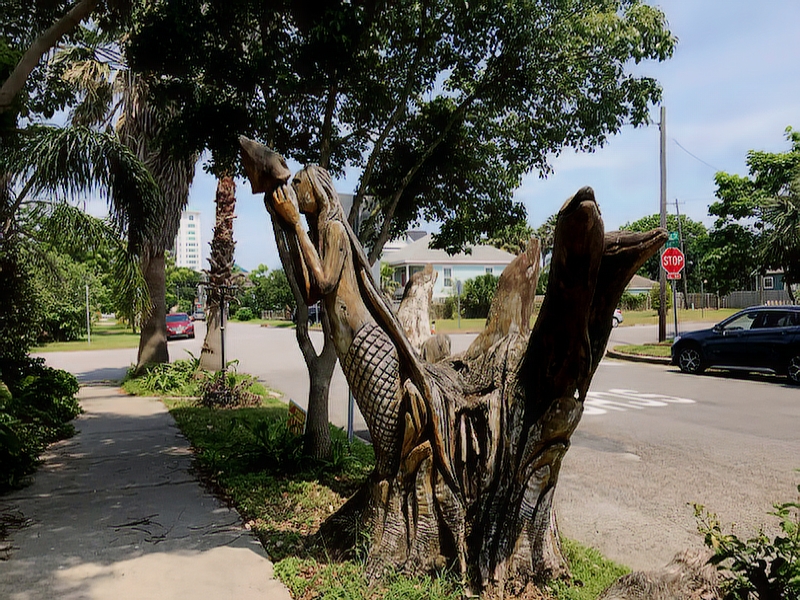

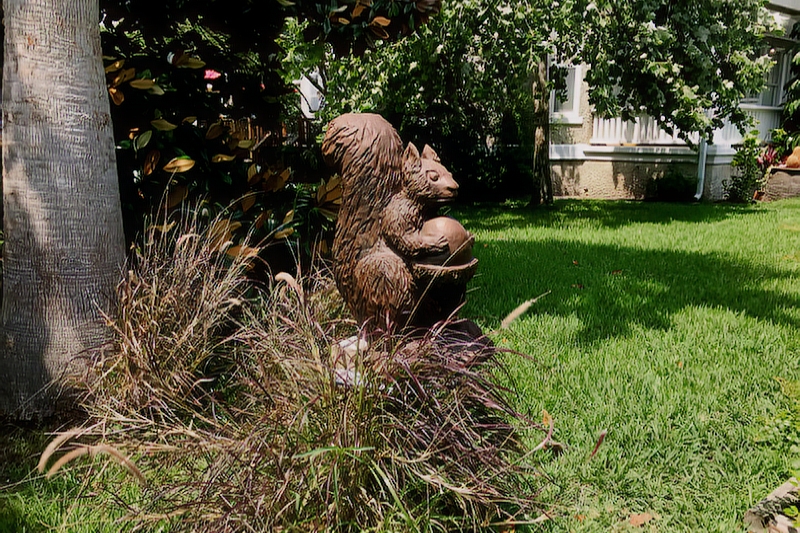

Most of these tree sculptures are in the East End Historic District. Many of these whimsical sculptures are on city property. However, the majority, having a personal significance to the homeowner, are in front yards on private property but still visible as you walk or drive by. You can find more information and a map at GalvestonGuide.com.
The Lost Bird Project
Species of birds become extinct for many reasons. Loss of food sources, loss of habitat, and even hunting all contribute to the extinction of birds. In honor of extinct birds, Todd McGrain, a sculptor at the Cornell Lab of Ornithology, has created extinct bird sculptures throughout the country. Today, there are six of these sculptures in Galveston, Texas.
“Forgetting that these birds ever existed is another kind of extinction.”
Todd McGrain
Five extinct bird sculptures are on the grounds of the Bryan Museum in a temporary exhibit until March 2021. If the Bryan Museum gates are open, you can walk in to view them, but they are visible from the street after museum hours, and the gates are closed. The museum is open 10 -4 daily but closed on Mondays and Tuesdays.
There is a fee to enter the museum. More information is at the Bryan Museum Lost Bird Project.
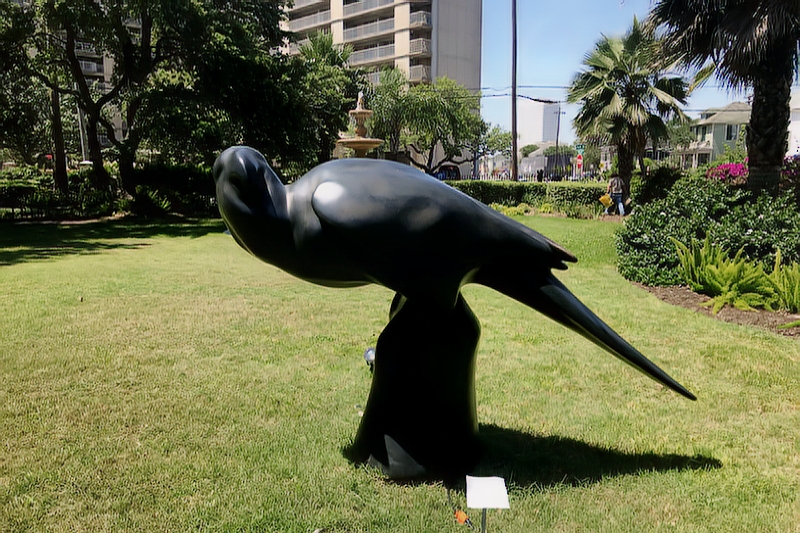

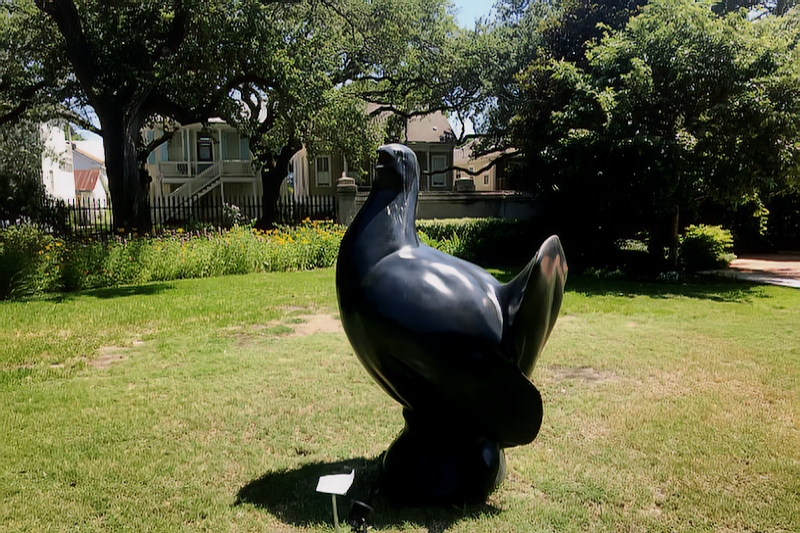


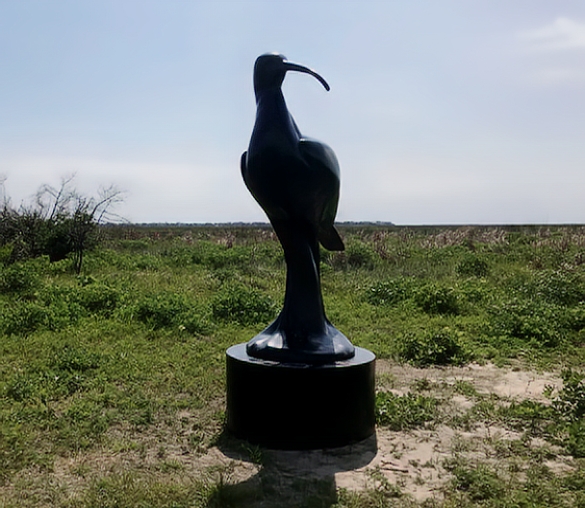
In addition to those five sculptures, a six-foot sculpture of the Eskimo Curlew is now in place at Galveston Island State Park on the Clapper Rail trail near the last sighting of this bird. We were unsuccessful in our first attempt to see this because we arrived at the park on an extremely high tide day.
The walkway to reach this sculpture is across a small body of water, but that particular day, at high tide, it was under the water. We returned to the park the following week and had no trouble crossing the walkway, this time above the water, and walking right up to the statue. Galveston Island State Park has great trails and nature lookout areas.
A tiny adventure, right?
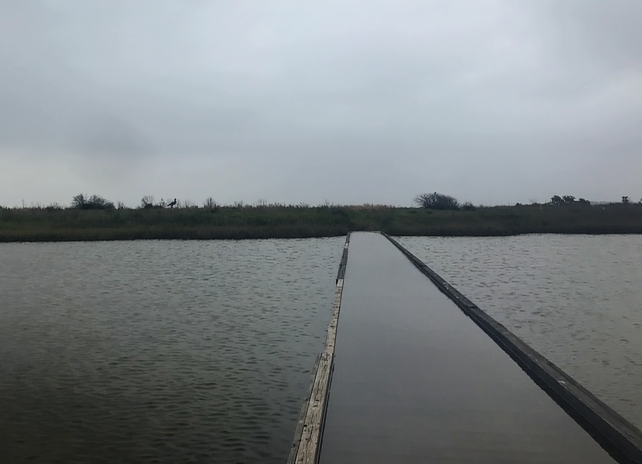
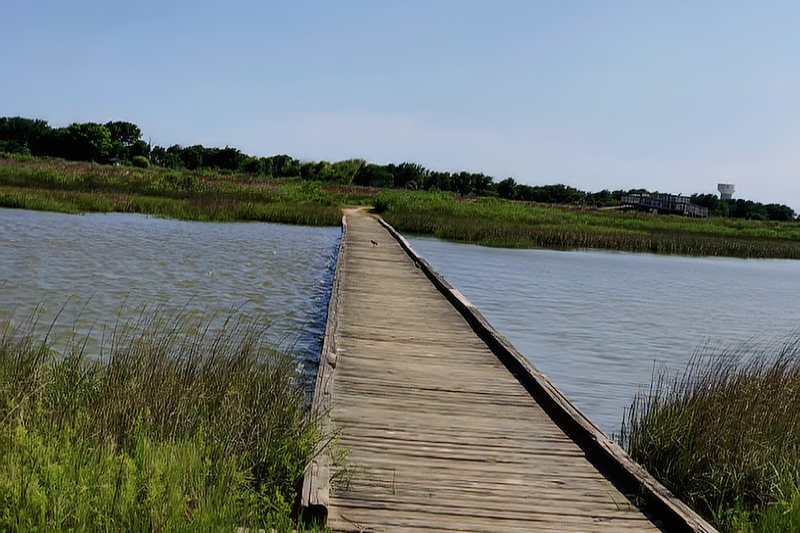
Phoenix
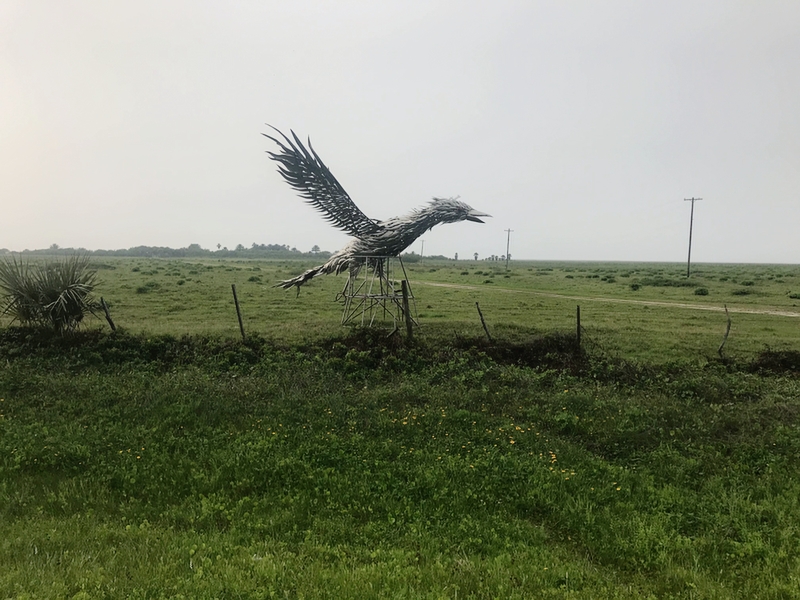
This large metal Phoenix sculpture was a surprise Galveston area treat. Since we were out at Galveston State Park taking a look at the Eskimo Curlew statue, and the drive is so pretty out that way, we drove around on FM 3005 for a while, just looking at the lovely homes.
This Phoenix is inside a fence on the private ranch property of Tom Bacon and is a creation of his brother and Houston artist Bob Bacon. The Phoenix is on the north side of FM 3005, between three to four miles west of Jamaica Beach, and is hard to miss at 15 feet tall and a wingspan of 35 feet! The artist put it in place at this site in mid-April.
Just recently, a spring storm blew through with extremely high winds, over 50 mph, and toppled the structure. I took a quick drive out to find out if the statue had been put back in its place and was very pleased to see it standing tall, just where I’d last seen it.
Steve and I had two enjoyable day trips to Galveston to wander in the cemetery, see the turtles, tree sculptures, fountains, extinct bird statues, and giant glistening Phoenix. We do live very close, so our only expense for these excursions was gas for the car. If you live in the area, why not take a full-day trip to Galveston, see some or all of these sights, and enjoy a great meal at one of Galveston’s amazing restaurants?
Many restaurants have outdoor patios, and outside dining in the fresh ocean air is so much fun. Let me know if a Galveston trip works out for you and whether you plan to see these art surprises on the island. I would also like to know what type of travel information or destinations interest you the most. Don’t forget to share this post with folks you think would enjoy reading about Galveston’s surprises.
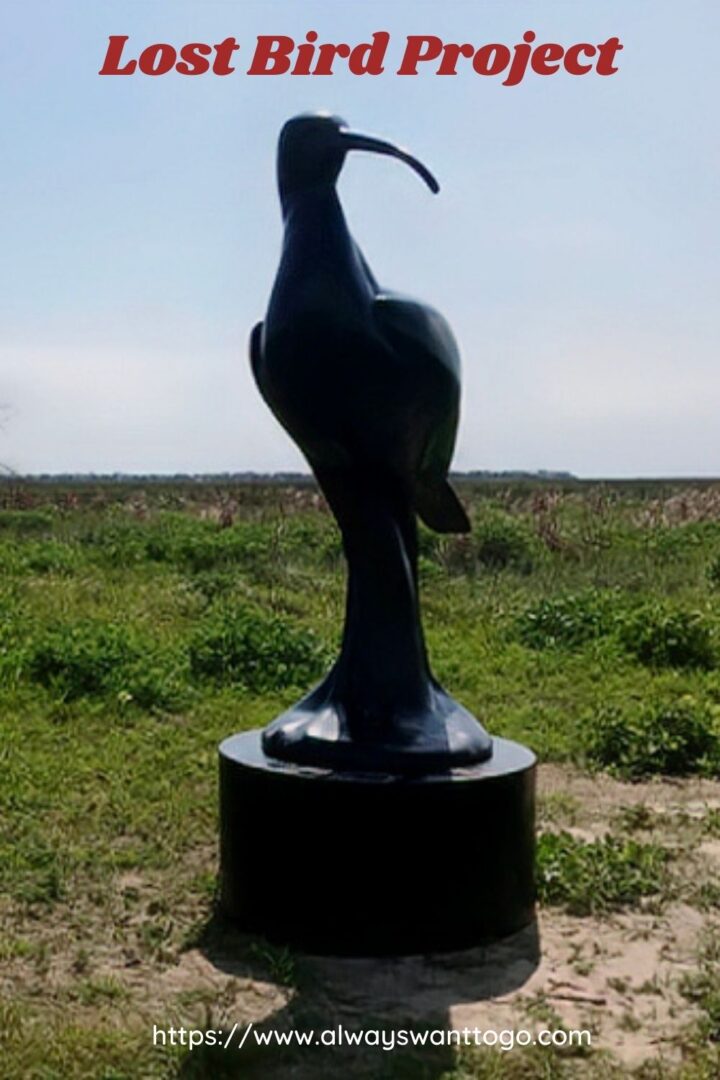
Sometime this summer I’ve got to take a day trip down to Galveston and see all these cool sites! I especially want to see those turtles!
Oh, the turtles are so neat to see. I cannot believe I never knew of their existence before. We have not seen all of them yet either. It will be a good day trip for you.
That is great public art. Thanks. I want to check it out before a cruise someday.
– Kevin from http://www.retirestyletravel.com
That will be a fun thing to do a day or so before a cruise. There are so many more arty things to see. Galveston is truly a fun and interesting city, even if you even consider the beach.